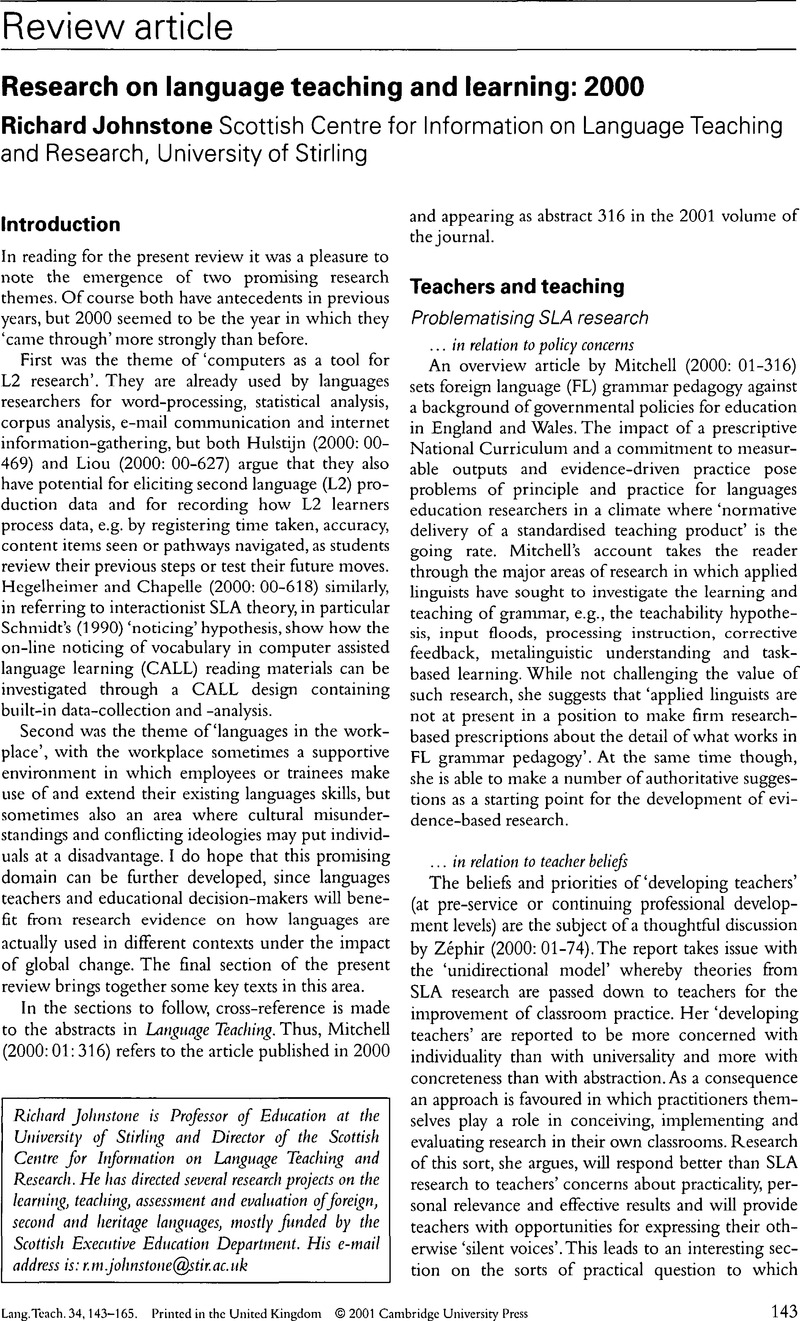Crossref Citations
This article has been cited by the following publications. This list is generated based on data provided by Crossref.
Broady, Elspeth
2002.
In other journals — a challenge!.
The Language Learning Journal,
Vol. 25,
Issue. 1,
p.
65.
Edelenbos, Peter
and
Kubanek-German, Angelika
2004.
Teacher assessment: the concept of ‘diagnostic competence’.
Language Testing,
Vol. 21,
Issue. 3,
p.
259.



